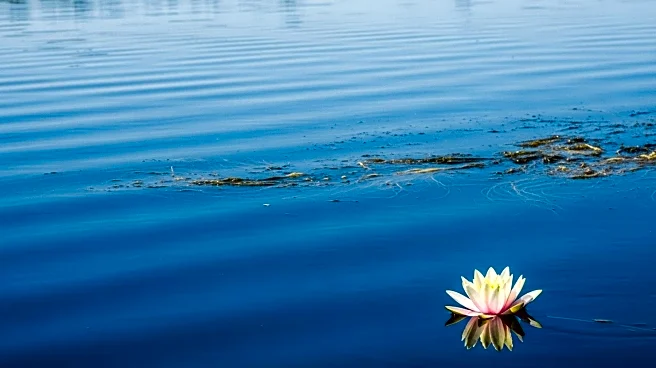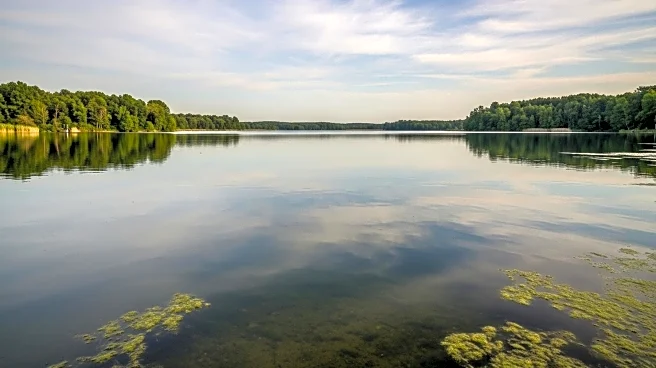What's Happening?
Lough Neagh, the UK's largest lake, is experiencing its worst year of toxic algal blooms, with rescue plans stalled. The lake has recorded 139 detections of cyanobacteria growths, more than triple the number from the previous year. The blooms are caused by excessive phosphorus and nitrogen from agricultural runoff, wastewater treatment facilities, and septic tank leakage. The pollution has led to a ban on eel fishing, significantly impacting local fishers' incomes. Despite promises from Northern Ireland's government to address the issue, political opposition and underfunding have hindered progress.
Why It's Important?
The environmental crisis at Lough Neagh highlights the urgent need for effective pollution management and sustainable practices. The algal blooms threaten aquatic life and the livelihoods of local fishers, emphasizing the economic and ecological importance of the lake. The situation underscores the challenges of balancing agricultural practices with environmental conservation. It also reflects broader issues of political will and resource allocation in addressing environmental crises. The lake's condition serves as a warning of the potential consequences of neglecting environmental stewardship.
What's Next?
Northern Ireland's government faces pressure to implement the Nutrients Action Programme, which includes measures to limit phosphorus inputs from farms and improve wastewater management. Political debates are expected to continue as stakeholders push for action. Discussions with private landowners and conservation groups may lead to new management strategies for the lake. The situation may also prompt increased public advocacy and demonstrations to demand urgent action. The outcome will likely influence future environmental policies and funding priorities.











